#
Why they matter
Do them well, and skimo transitions will be an insignificant portion of your race. Do them poorly, and you'll lose to that guy you can't stand.

At the top and bottom of each leg of a skimo race, racers have to adjust their equipment. The adjustments are called transitions because the changes allow racers to change between skinning, skiing, and bootpacking.
Mastering each combination is essential in order to make transitions an almost-irrelevant part of a race. If you screw them up, they add unnecessary time to your race. Your race result will haunt you with what could have been if you had practiced.
This is especially true in the sprint format. A skimo sprint course takes between four and six minutes to complete. In such a short race, a botched transition can be the difference between a decent result and the back of the pack.
#
The six skimo transitions
Skimo racing has six main transitions with an entrance and exit routine that is similar for each. Once well-practiced, components from each can be mixed and matched according to the terrain.
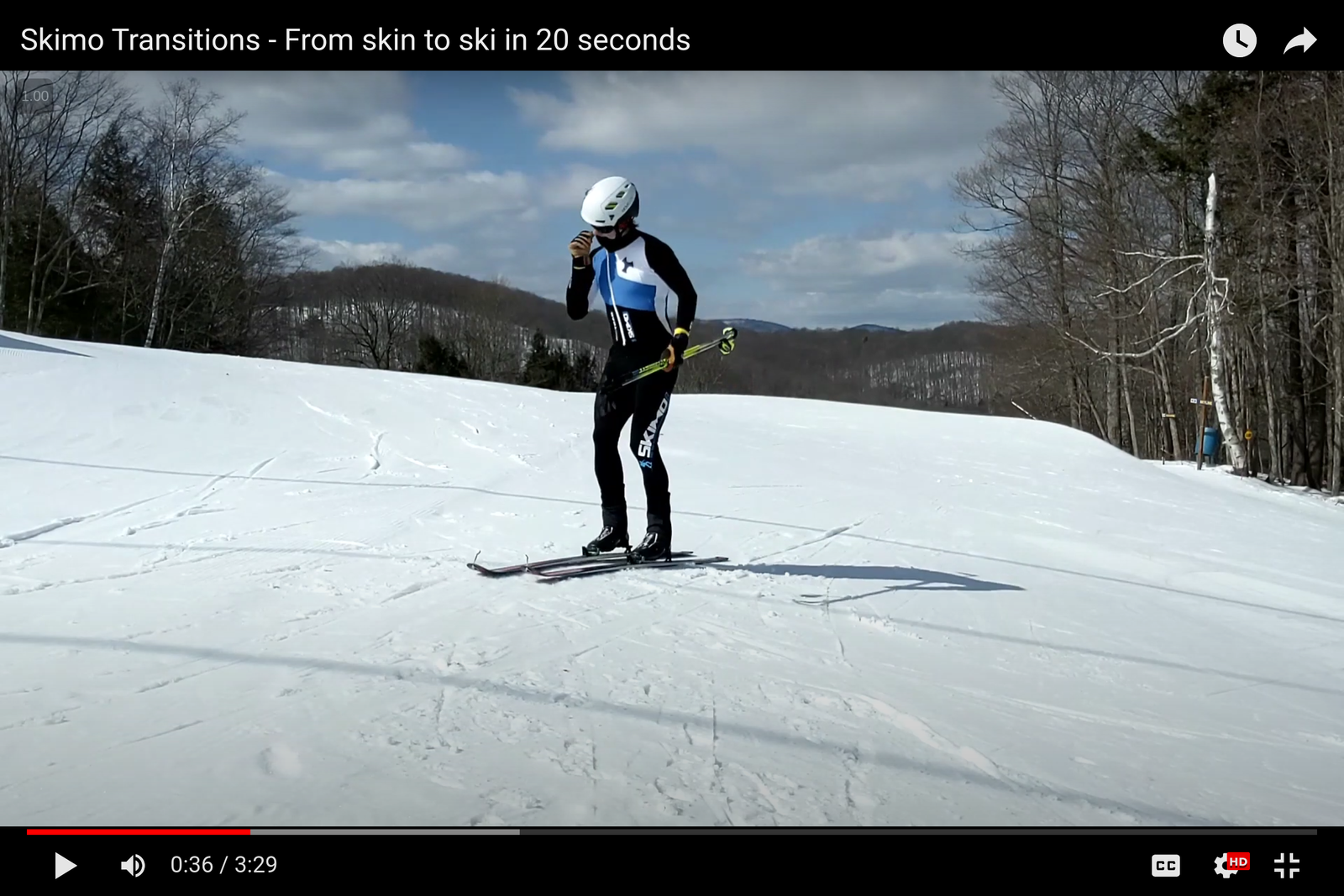
#
Entering a Transition
Regardless of the transition type, approaching a transition zone has a handful of common actions.

#
1. Skin to Ski: Single Rips
At the top of each climb, a skimo racer must switch from uphill skinning to downhill skiing and do it in less than 30 seconds to be competitive. Less than 20 seconds is ideal.
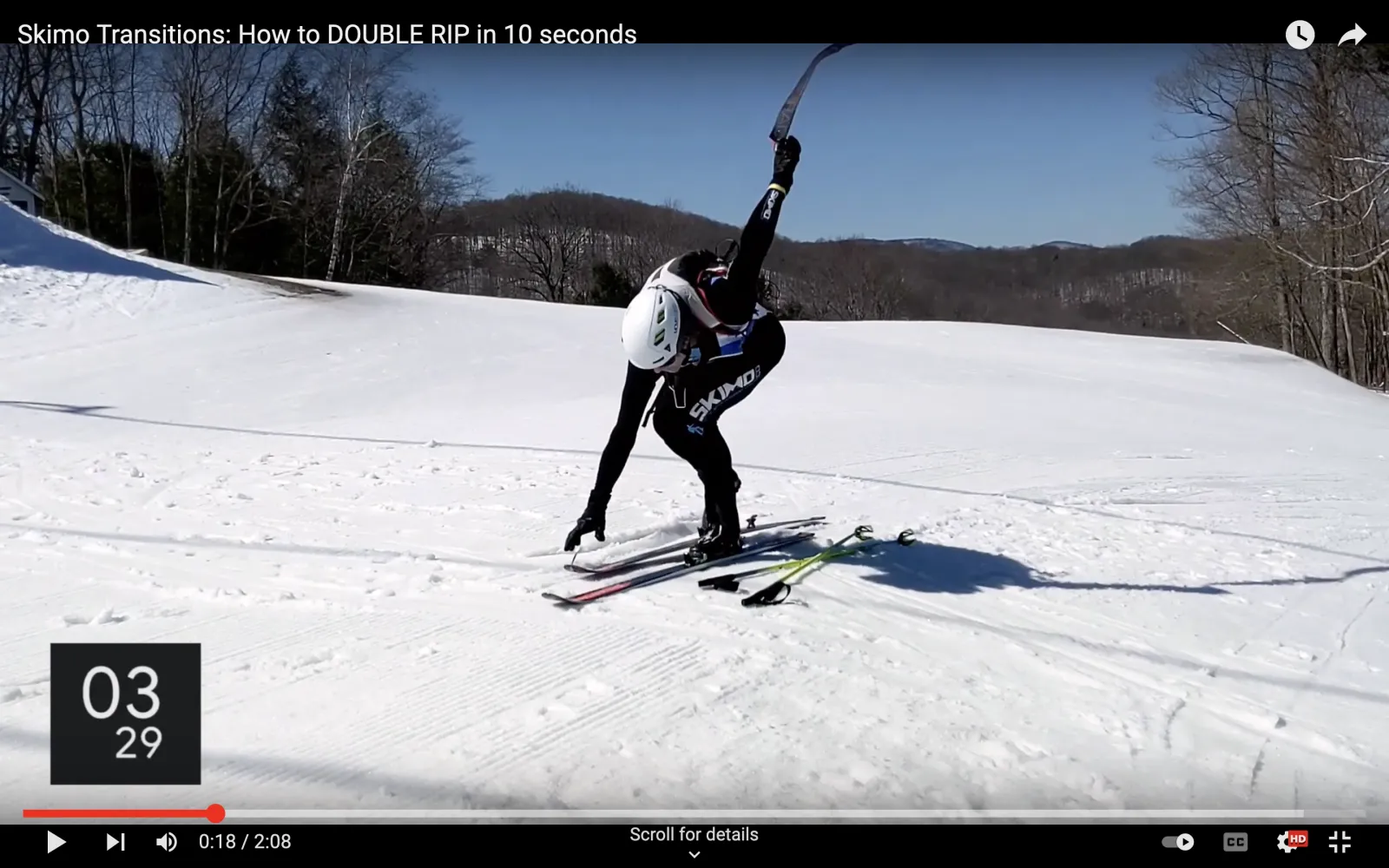
#
2. Skin to Ski: Double Rip
After the final ascent, instead of two single-skin rips, it's much faster to double-rip both skins and stuff the sticky mess in your suit.
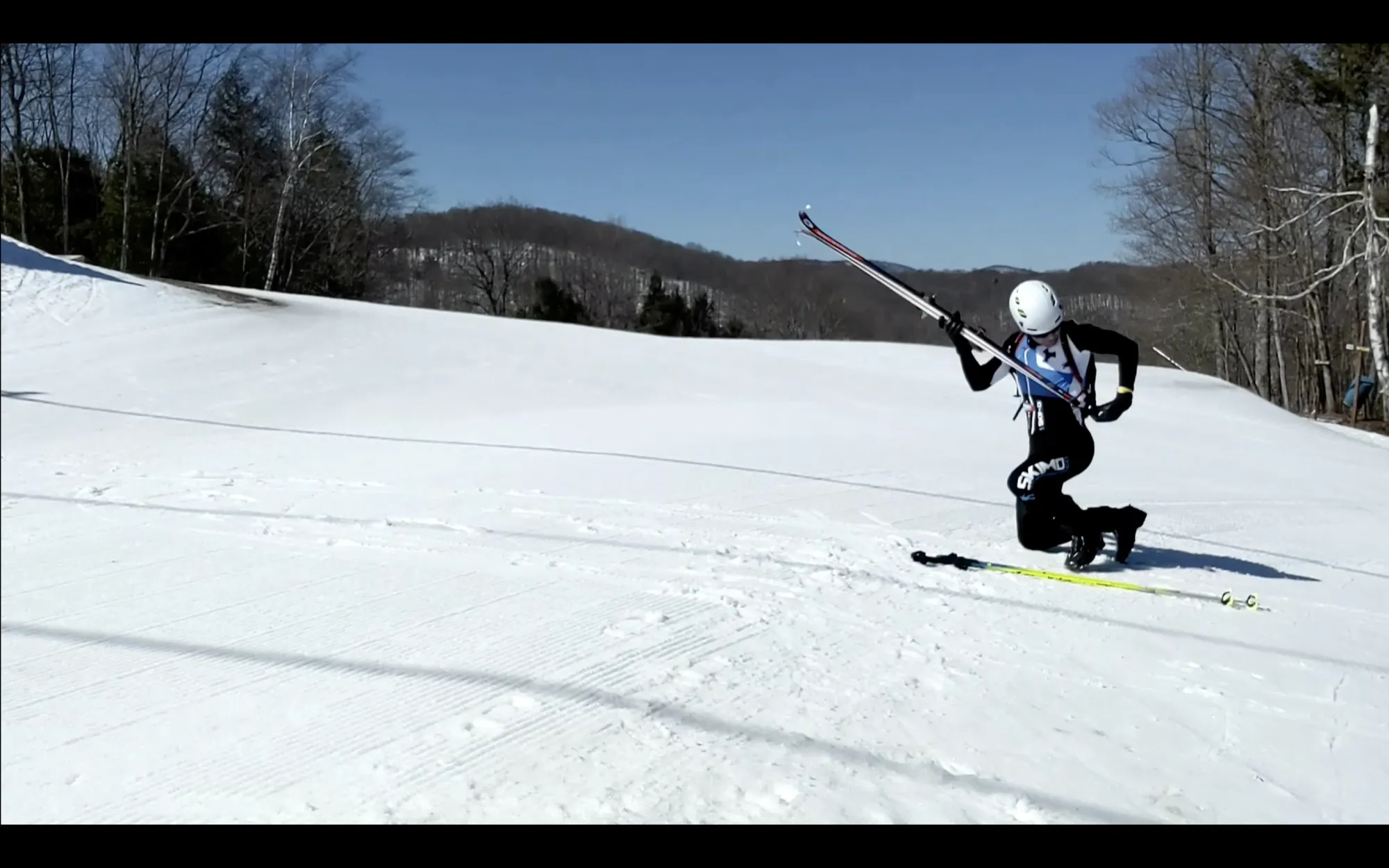
#
3. Skin to Boot
Bootpacks are too steep to skin, so racers must switch from skinning to booting. With practice, a bootpack transition can be done in a few seconds.
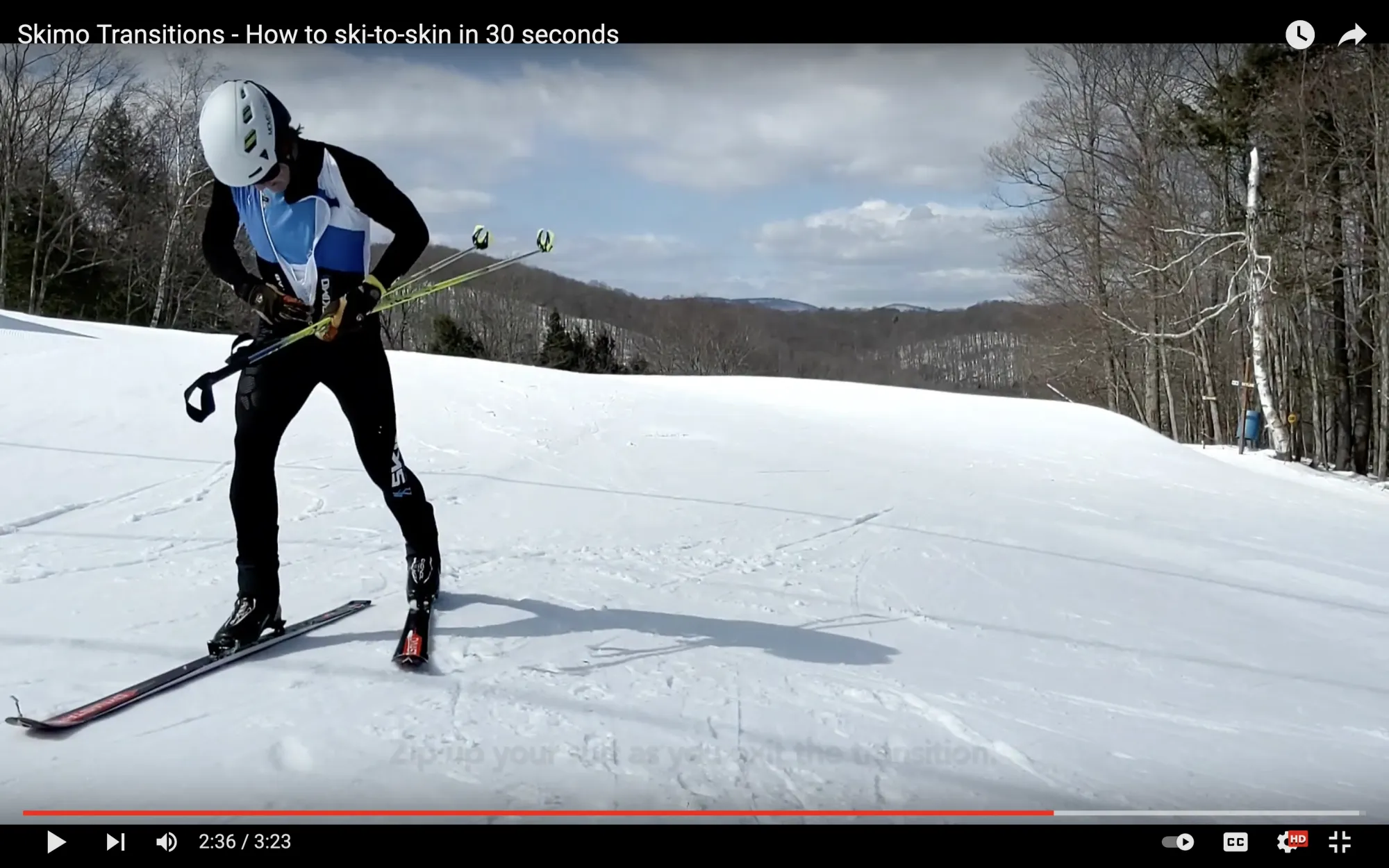
#
4. Ski to Skin
At the top of each climb, a skimo racer must switch from downhill skiing to uphill skinning and do it in less than 45 seconds to be competitive. Less than 30 seconds is ideal.
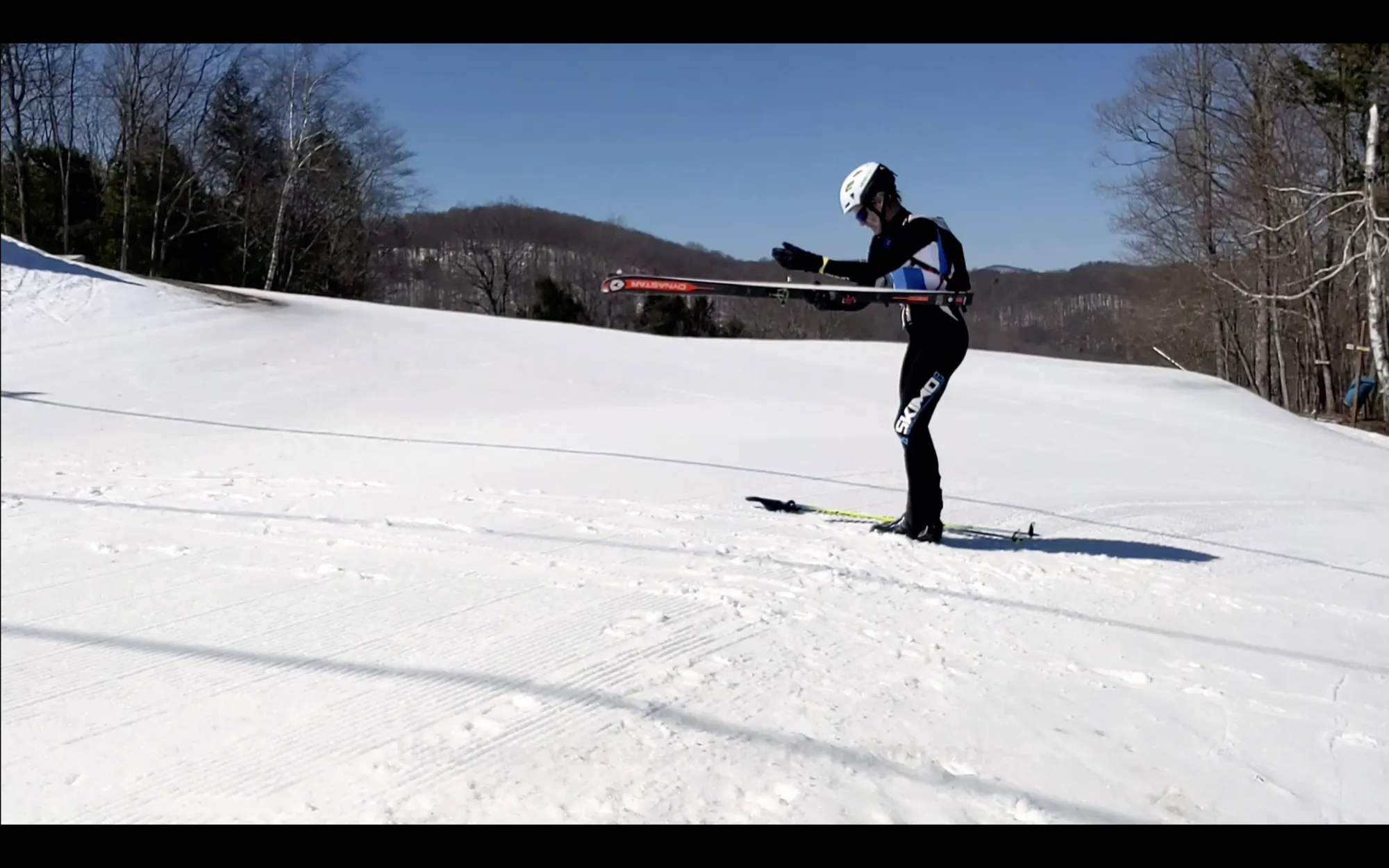
#
5. Boot to Skin
Bootpack sections, especially in the sprint event, often end with more skinning. Boot to Skin should only take a few seconds.

#
6. Boot to Ski
When a bootpack ends at a ridge top or couloir, the transition is to skiing rather than to skinning.
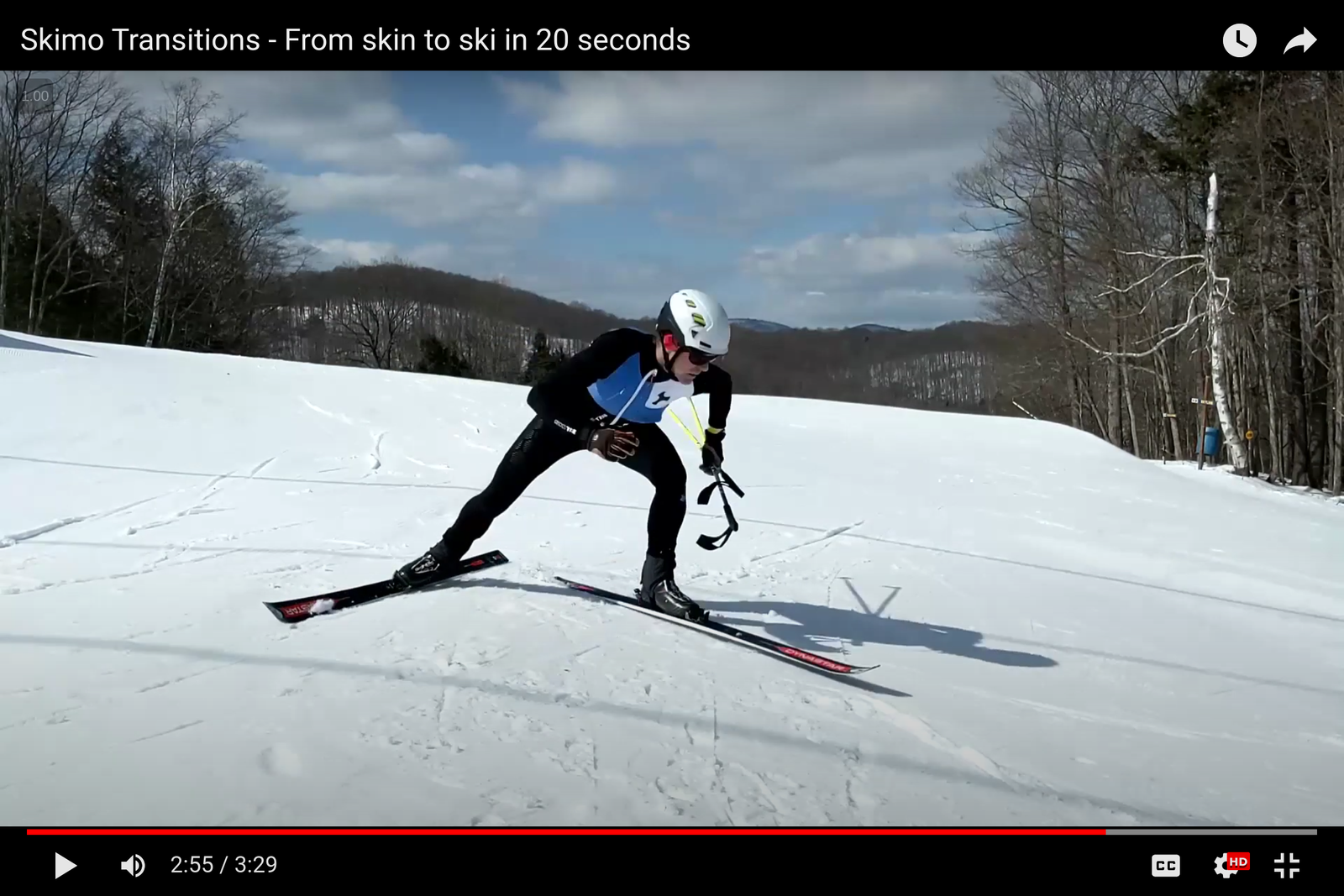
#
Exiting a Transition
Regardless of the transition type, leaving a transition zone has a handful of common actions.
#
Skimo transitions are essential
Done well, transitions contribute an insignificant amount of time to the length of a typical skimo race. Done badly, transitions will increase your race time and force you to finish well behind other racers of similar fitness. But anyone can have fast transitions. All it takes is practice.